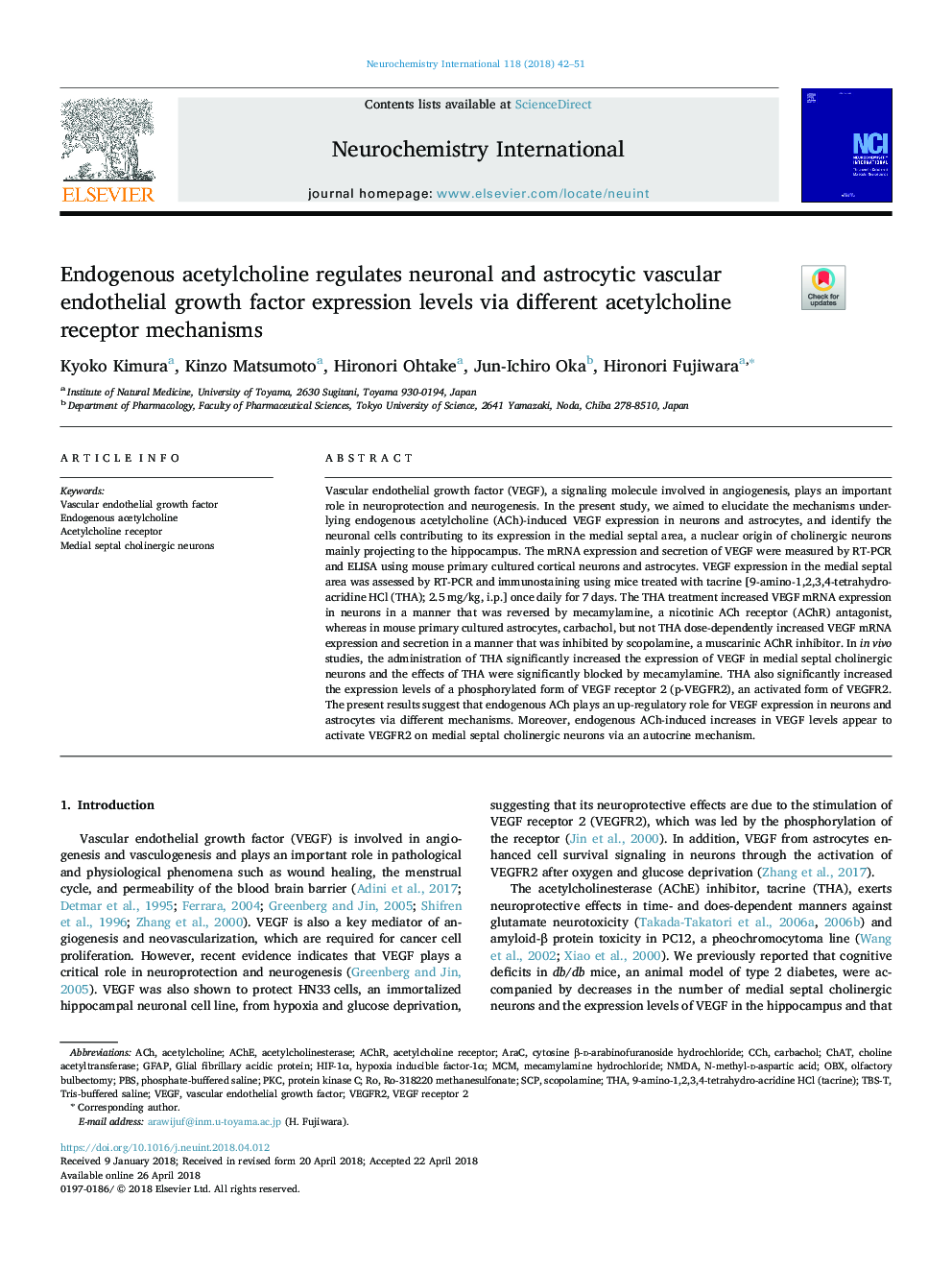| Article ID | Journal | Published Year | Pages | File Type |
|---|---|---|---|---|
| 8478860 | Neurochemistry International | 2018 | 10 Pages |
Abstract
Vascular endothelial growth factor (VEGF), a signaling molecule involved in angiogenesis, plays an important role in neuroprotection and neurogenesis. In the present study, we aimed to elucidate the mechanisms underlying endogenous acetylcholine (ACh)-induced VEGF expression in neurons and astrocytes, and identify the neuronal cells contributing to its expression in the medial septal area, a nuclear origin of cholinergic neurons mainly projecting to the hippocampus. The mRNA expression and secretion of VEGF were measured by RT-PCR and ELISA using mouse primary cultured cortical neurons and astrocytes. VEGF expression in the medial septal area was assessed by RT-PCR and immunostaining using mice treated with tacrine [9-amino-1,2,3,4-tetrahydro-acridine HCl (THA); 2.5â¯mg/kg, i.p.] once daily for 7 days. The THA treatment increased VEGF mRNA expression in neurons in a manner that was reversed by mecamylamine, a nicotinic ACh receptor (AChR) antagonist, whereas in mouse primary cultured astrocytes, carbachol, but not THA dose-dependently increased VEGF mRNA expression and secretion in a manner that was inhibited by scopolamine, a muscarinic AChR inhibitor. In in vivo studies, the administration of THA significantly increased the expression of VEGF in medial septal cholinergic neurons and the effects of THA were significantly blocked by mecamylamine. THA also significantly increased the expression levels of a phosphorylated form of VEGF receptor 2 (p-VEGFR2), an activated form of VEGFR2. The present results suggest that endogenous ACh plays an up-regulatory role for VEGF expression in neurons and astrocytes via different mechanisms. Moreover, endogenous ACh-induced increases in VEGF levels appear to activate VEGFR2 on medial septal cholinergic neurons via an autocrine mechanism.
Keywords
PBSOBXPKCCCHTBS-THIF-1αAChRN-methyl-d-aspartic acidNMDATHASCPVEGFR2GFAPMCMAChAChEAcetylcholineAcetylcholinesteraseScopolamineTris-buffered salineAraChypoxia inducible factor-1αVascular endothelial growth factorVascular Endothelial Growth Factor (VEGF)Phosphate-buffered salineGlial fibrillary acidic proteinProtein kinase CChATCarbacholcholine acetyltransferaseOlfactory bulbectomyVEGF receptor 2acetylcholine receptor
Related Topics
Life Sciences
Biochemistry, Genetics and Molecular Biology
Cell Biology
Authors
Kyoko Kimura, Kinzo Matsumoto, Hironori Ohtake, Jun-Ichiro Oka, Hironori Fujiwara,
